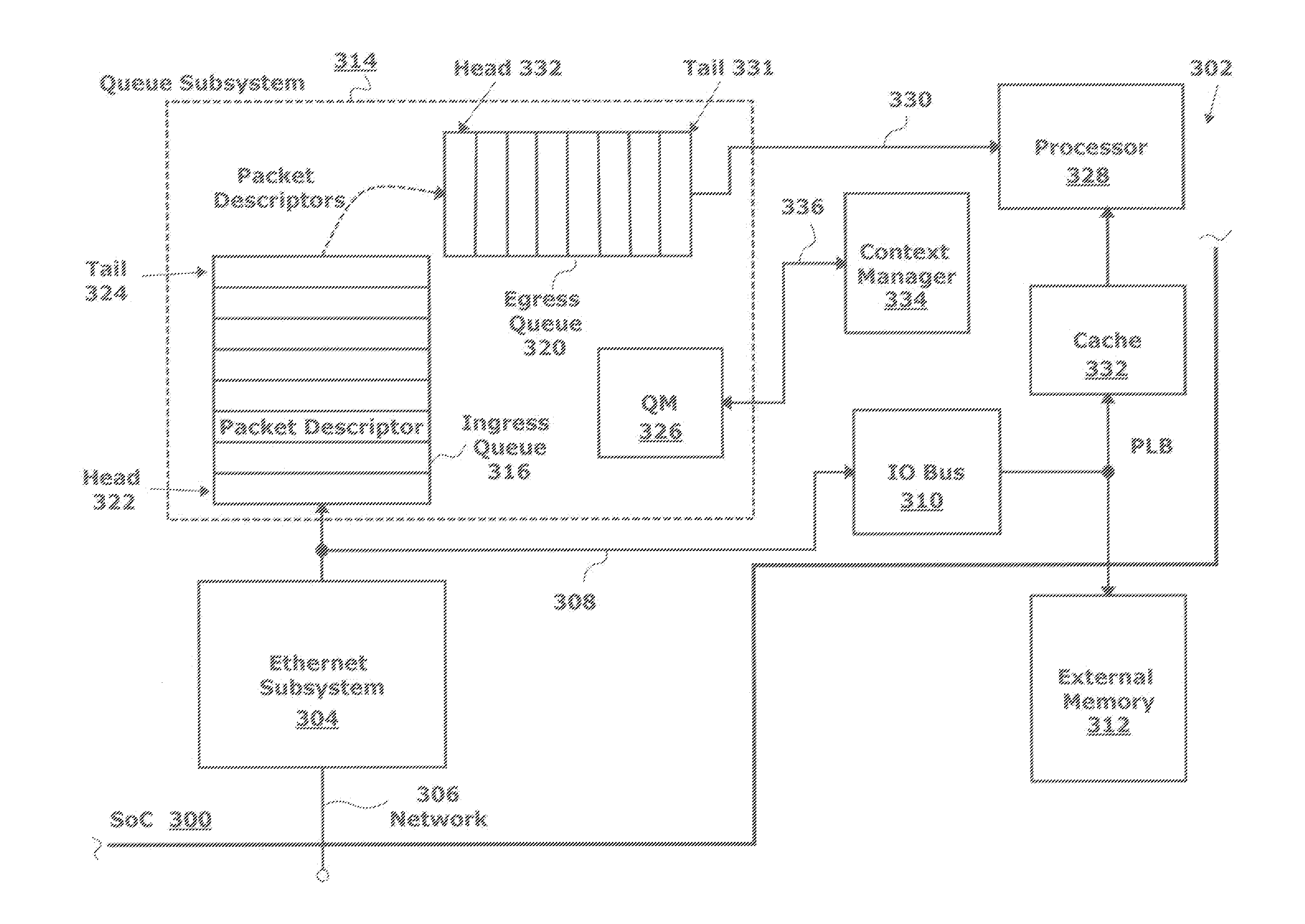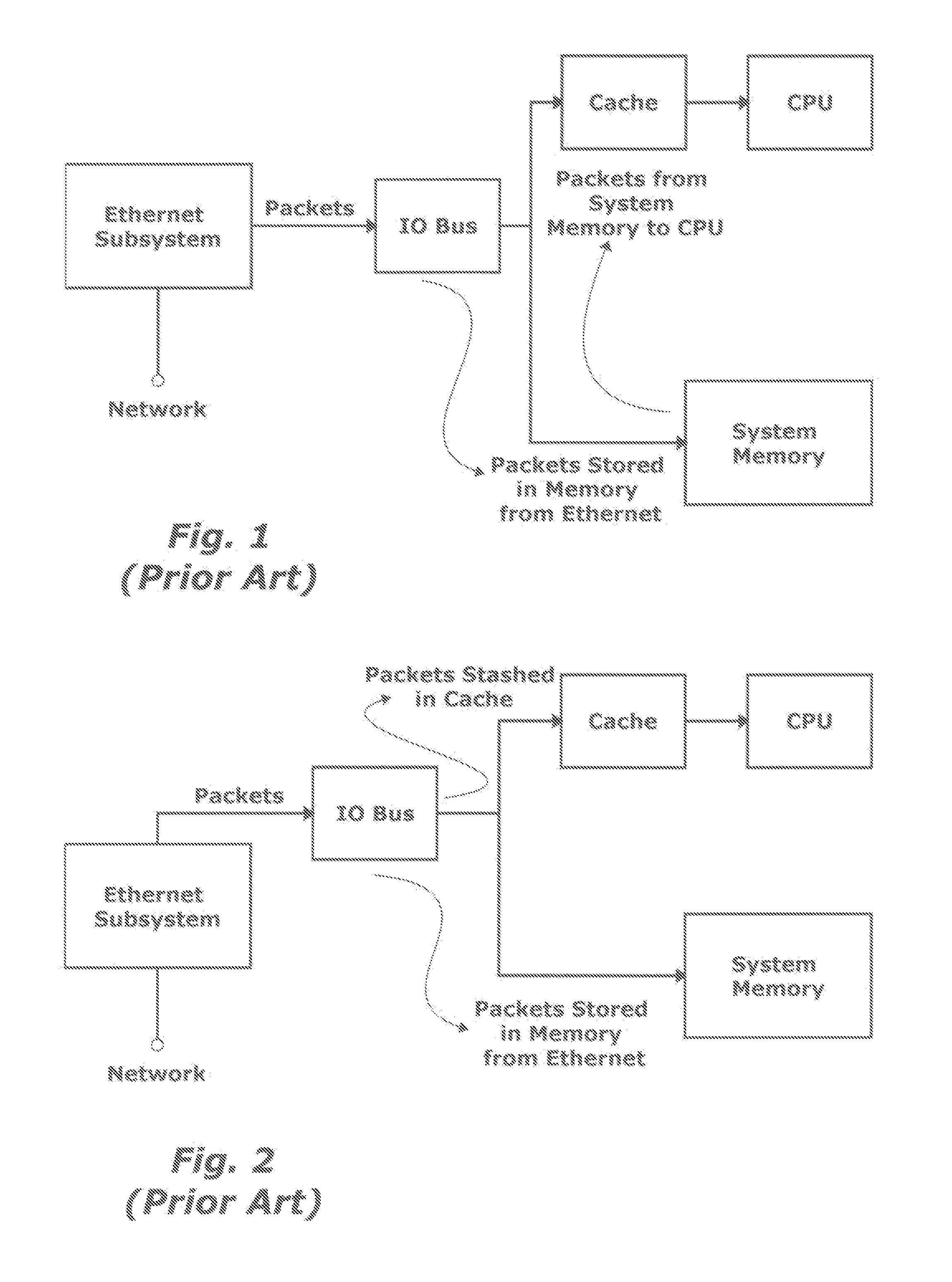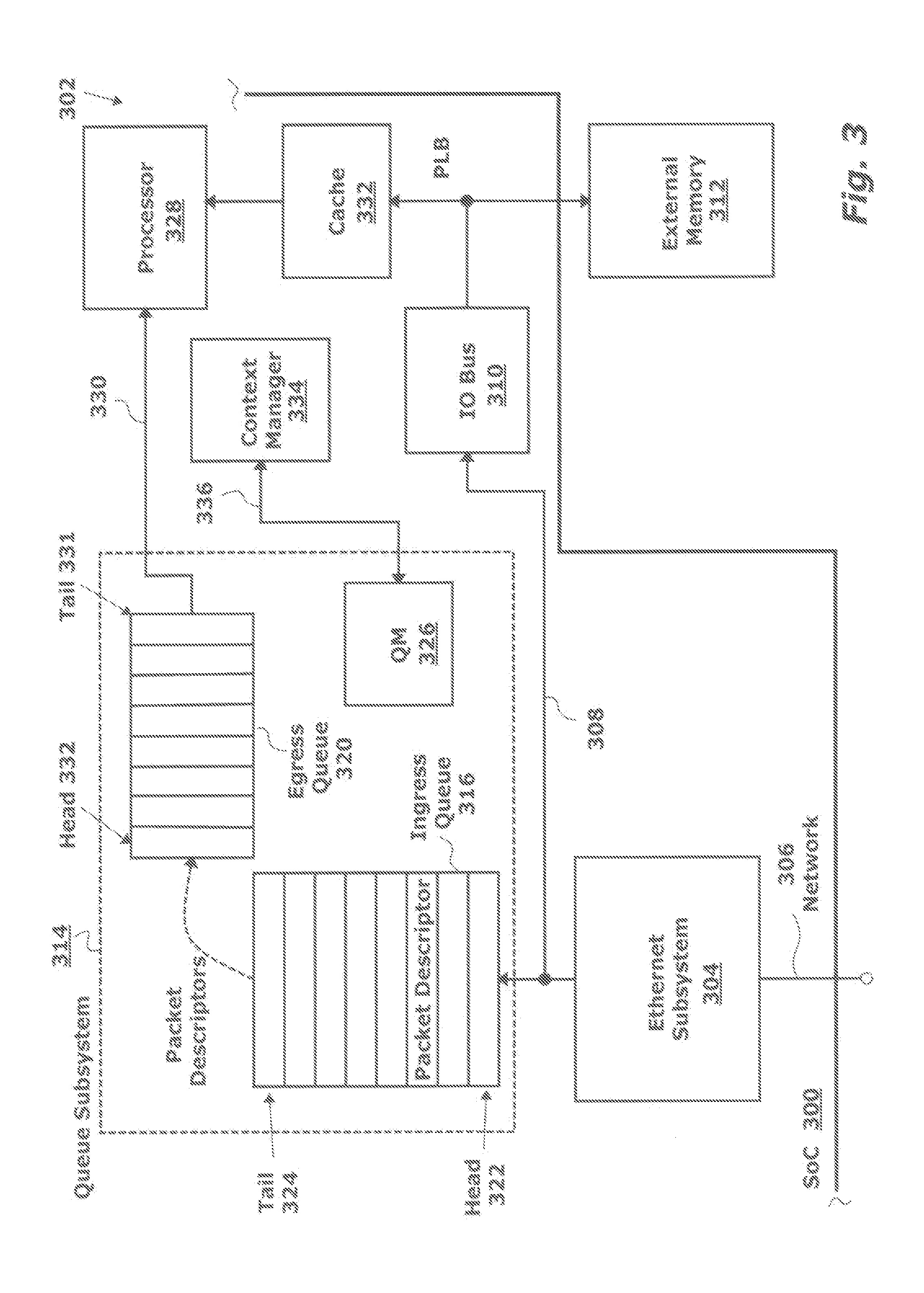Stashing system and method for the prevention of cache thrashing
- Summary
- Abstract
- Description
- Claims
- Application Information
AI Technical Summary
Benefits of technology
Problems solved by technology
Method used
Image
Examples
Embodiment Construction
[0018]FIG. 3 is a schematic block diagram of a system-on-chip (SoC) 300 including a processor, with a system for stashing packet information that prevents cache thrashing. The system 302 comprises an Ethernet subsystem 304 having a network interface on line 306 for accepting a plurality of packets. The Ethernet subsystem 304 derives a packet descriptor for each accepted packet. The Ethernet subsystem 304 has an interface on line 308 connected to an input / output (IO) bus 310 to supply the packet descriptors and to supply the packets to an external memory 312. Typically, the external memory 312 is located off-SoC as shown, but alternatively the memory may be embedded in the SoC. A queue subsystem 314 includes an ingress queue 316 with a head 318 connected to the IO bus 310. An egress queue 320 has a head 322 connected the tail 324 of the ingress queue 316. A queue manager (QM) 326 adds each packet descriptor to the ingress queue 316 and transfers the packet descriptors from the ingres...
PUM
 Login to View More
Login to View More Abstract
Description
Claims
Application Information
 Login to View More
Login to View More - R&D
- Intellectual Property
- Life Sciences
- Materials
- Tech Scout
- Unparalleled Data Quality
- Higher Quality Content
- 60% Fewer Hallucinations
Browse by: Latest US Patents, China's latest patents, Technical Efficacy Thesaurus, Application Domain, Technology Topic, Popular Technical Reports.
© 2025 PatSnap. All rights reserved.Legal|Privacy policy|Modern Slavery Act Transparency Statement|Sitemap|About US| Contact US: help@patsnap.com



